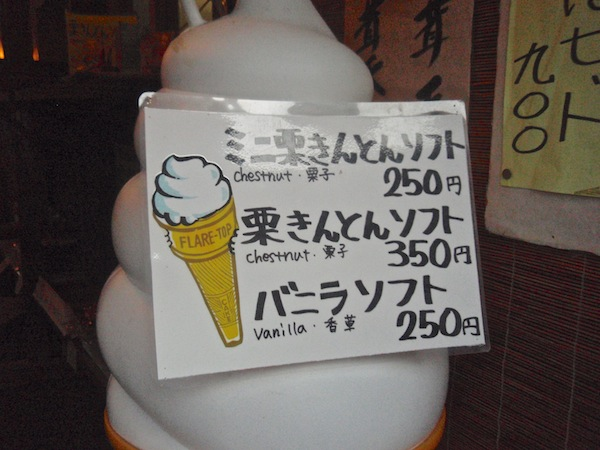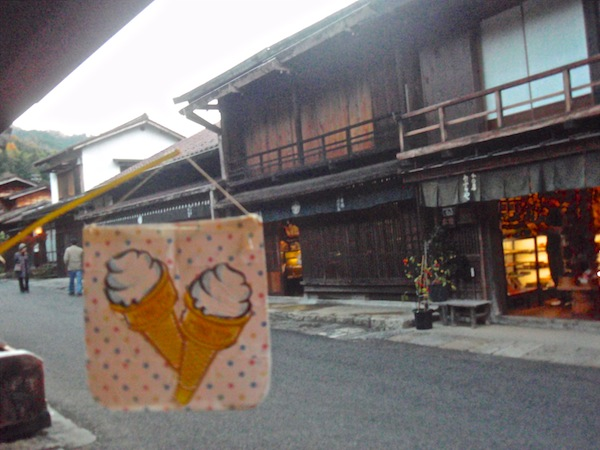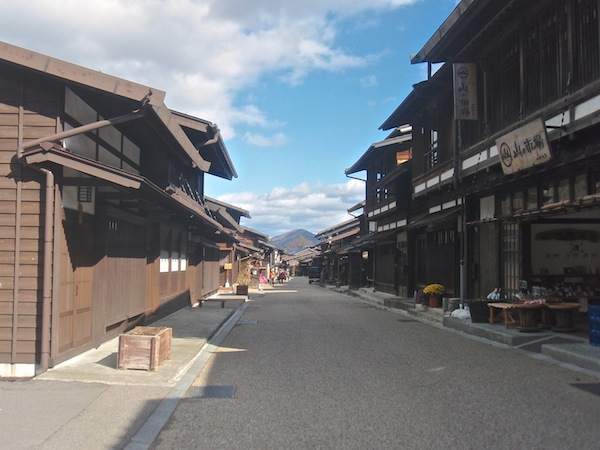The Nakasendo (literally “The Way through the Mountains”) is an ancient highway that linked the cities of Kyoto and Tokyo. Dating back to the 7th century, the route was used at its peak during the Edo Period (1600-1868), as one of the Five Highways (“Gokaido”) designated by the Tokugawa shogunate. The advent of modernization in Japan starting with the Meiji Restoration meant that this ancient route became disused, with parts purposefully removed — including some of the honjin inns where the feudal lords stayed — as vestiges of a backward, draconian regime.
Walk Japan, however, takes visitors on a unique journey across those stretches that have been preserved or even rediscovered in recent years. In addition to the stunning walks through the countryside and old post-towns, there is ample opportunity to eat, and eat some more! Here, I would like to introduce some of the local delicacies travellers will encounter along the way.

Cafe Kappe in Magome offers local delicacies such as gohei mochi and oyaki, and boasts fabulous views of Mt. Ena.
Gohei Mochi (五平餅, also written 御幣餅)
This skewered, pounded rice dumpling is difficult to miss on any journey along the Nakasendo: its wholesome, nutty aroma bound to entice travellers, particularly on the stretches in Gifu and Nagano prefectures. Unlike mochi found in other areas of Japan, gohei mochi is not made from glutinous rice — but that’s not to say it has any negative impact on its flavour! The sauce in which it is grilled varies, but is usually a delectable concoction of sweet miso paste, peanuts and walnuts, or even egoma or shiso (perilla).
Gohei mochi is believed to have originated in the Edo Period, when rice was a precious resource for the people of these remote regions and therefore eaten only on special and festive occasions. It is thought to have been named after an implement used in Shinto ritual: a wooden staff to which two zig-zagged paper streamers are attached. Priests or shrine maidens (miko-san) may use it to purify worshippers, for example at New Year and other festivals.
On Walk Japan’s Nakasendo Way tour, we will often stop by a quaint volunteer-run stall in the post-town of Mitake to pick up some gohei mochi for our picnic lunch, but the snack can also easily be sought out among many shops and stalls in the picturesque towns (and tourist hotspots) of Magome and Tsumago. While there are several varieties across the region, the most distinctive is the large ‘paddle’-shaped one (shown below). Another kind is called “gunbai” (軍配) which are supposed to resemble samurai fans.
Kurikinton (栗きんとん)
Kurikinton is perhaps the most famous autumnal delight to emerge from the Mino plain. A rich, creamy sweet consisting of sugared chestnut (kuri) and sweet potato (satsuma imo), it is loved all over Japan. A variation on this sweet is also a feature of osechi ryori, New Year meal, in which it is symbolic of good fortune and prosperity in the year ahead.
The establishment Suya in the former post-town of Nakatsugawa is said to be the ganso or originator of this high-end wagashi. Suya was founded as a vinegar shop by a samurai who came down from the city of Edo (now Tokyo) to settle, and became a confectioner 100 years later, in 1802. Kurikinton is only available from September to January, and a pack of six is priced at ¥1,425.
We only pass through Nakatsugawa on the Walk Japan tour, but visitors staying longer might like to compare the taste of kurikinton from the 14 local wagashi shops that make it! More information in Japanese is available at www.kurikinton.info
I had the great pleasure of sampling some absolutely delicious Kurikinton icecream in Tsumago — surprisingly refreshing in the cool, late-autumn evening!
Oyaki (おやき)
In pre-modern times, those living deep in the mountains of Nagano Prefecture learned how to make do without some of the foodstuffs that much of Japan was able to take for granted, such as rice and salt. Buckwheat (the same wheat used in soba noodles — which is a must-try whilst in the area) became a much more viable alternative. Fermented buckwheat flour was used in dumplings, known as oyaki, and filled with various local vegetables and miso.

Oyaki dumplings are a delicacy in Shinshu (Nagano Prefecture) (from http://www.shinshu-oyaki.jp) Fillings might include yomogi (mugwort), chestnut, aubergine or an (sweet red bean paste).
Not feeling up to a filling soba lunch, I stopped by one of the few open oyaki/goheimochi stalls in the town of Narai, which by this time of year is very tranquil! On a bench in the shade of the overhanging eaves — something unique to the architecture of this town — I happily chomped on my kabocha squash and nozawana (leafy vegetable from the turnip family) dumplings. Mmm! And to top it off, the owner of the shop next door very kindly brought me a hot cup of hojicha tea!
***
Walk Japan specializes in off-the-beaten-track walking tours, including the Nakasendo Way Tour. Find out more at www.walkjapan.com

























